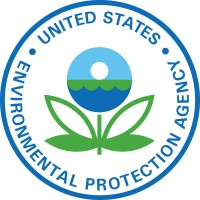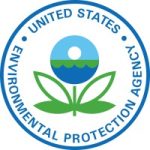On March 14, the U.S. Environmental Protection Agency (EPA) announced its final rule on ethylene oxide (EtO) emissions. The rule is intended to reduce lifetime cancer risks for people living near commercial sterilization facilities. The EPA estimates that implementation of the new regulations will reduce EtO emissions from commercial sterilization facilities by approximately 21 tons per year (tpy), or more than 90%.
EPA stated that it considered the latest data and science, while taking into account the importance of a safe and reliable supply of medical sterilization devices for patients and hospitals, and worked closely with partners across the Biden-Harris Administration, including at the Department of Health and Human Services.
“This final rule to sharply cut toxic emissions of ethylene oxide responds to the ambition set forth by President Biden’s Cancer Moonshot,” said EPA Administrator Michael S. Regan. “We have followed the science and listened to communities to fulfill our responsibility to safeguard public health from this pollution—including the health of children, who are particularly vulnerable to carcinogens early in life. We’ve arrived at a historically strong rule that will protect the most exposed communities from toxic air pollution while also ensuring that there will be a process that safeguards our nation’s critical supply of sterilized medical equipment.”
In its announcement of the new regulations, EPA noted that it conducted extensive outreach to communities and stakeholders, including public hearings, national webinars, and public meetings hosted by regional EPA offices. Based on the feedback received during public hearings, as well as the more than 40,000 comments submitted to the rulemaking docket, EPA improved the risk assessment and strengthened the standards to ensure risk reductions for surrounding communities.
The final rule will address emissions at nearly 90 commercial sterilization facilities that are owned and operated by approximately 50 companies and includes finalizing the following amendments to the National Emission Standards for Hazardous Air Pollutants that:
- Establish standards for currently unregulated emissions, such as building leaks (“room air emissions”) and chamber exhaust vents, to reduce cancer risk and account for technological developments in pollution control.
- Strengthen standards that are on the books for sources such as sterilization chamber vents and aeration room vents.
- Require continuous emissions monitoring and quarterly reporting for most commercial sterilizers that will provide communities, states, Tribes, and local governments, and EPA with data to ensure EtO emissions are not entering the outdoor air.
- Ensure that sterilizers are subject to emission standards during periods of startup, shutdown, and malfunction so there is continuous clean air protection.
- Other clarifying items including electronic reporting and technical revisions.
In reference to concerns about implementation of the rule and the safety of devices that currently require sterilization with EtO, the EPA highlighted a provision of the Clean Air Act that provides backstop authority allowing the President to provide a two-year compliance exemption to assist a facility with achieving compliance with National Emission Standards for Hazardous Air Pollutants in carefully delimited special circumstances—if the technology to implement the standard is not available and it is in the national security interest to provide additional time to comply. “EPA has confirmed that the President is prepared to exercise this authority, if necessary to protect the medical supply chain and a commercial sterilizer is working in good faith to come into compliance with the rule,” the EPA stated.
The final rule for commercial sterilizers is one of a series of coordinated actions that EPA is taking to reduce exposure to EtO. Under the Federal Insecticide, Fungicide, and Rodenticide Act (FIFRA), EPA’s Office of Pesticide Programs is working on a comprehensive set of new mitigation measures for EtO to reduce exposure for workers who use EtO to sterilize products and to align today’s Clean Air Act rule with the action being taken under FIFRA.
EPA is also working to strengthen standards to reduce EtO and other toxic pollutants from chemical plants. These actions include:
- Investigating additional sources of EtO (e.g., stand-alone warehouses) and opportunities for emissions controls.
- Enforcing existing regulations as appropriate.
- Conducting research to better understand and measure EtO.
“For years, I have called for environmental justice, urging protections for workers and fenceline communities from the dangers of EtO pollution,” said Xavier Becerra, U.S. Secretary of Health and Human Services. “We will continue to work together with EPA to achieve our shared goals of lowering EtO exposure while also mitigating potential risks of medical device shortages.”
View the final rule here.






